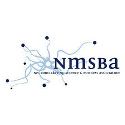Brainfluence (Book Review)

Below you can read the book review of Brainfluence (by Roger Dooley) that I wrote for publication in the first issue of Neuromarketing Theory & Practice Magazine (published by Neuromarketing Science & Business Association).
The book bridges the gap between research and marketplace, exploring a wide range of studies on neuromarketing, neuroscience and psychology of decision-making, with applications in marketing. As the author states from the beginning, “this book is all about smarter marketing”. The 286-page book is structured in 14 sections and 100 chapters that provide evidence from over 150 research studies, explaining in a clear, practical and concise manner how each of these results on understanding how the customer’s brain works can be exploited in order to raise sells and develop organizations by having better ads, better products and happier customers. Roger Dooley mentions and explains studies conducted by respected names in the research world.
Brainfluence contains different critical aspects that need to be taken into consideration when building business strategies, such as price setting for minimum pain for the customers, sensory marketing, brand associations, advices for printed ads and pictures, ways to build loyalty and trust or to increase flexibility in reaching a deal and improving communication, having success with humanitarian causes, copywriting insights, how to market complex products, language processing for each gender and website management strategies.
The author answers a wide variety of questions that most of the managers face, for example: what aspects do marketers need to focus on in order to make a sale, what is the worst place to put your logo in a printed ad or TV spot, or how to minimize the customer’s pain of paying, how to change the attitude of negative reviewers into loyal customers, how should the price be presented so as to have a greater impact on the buying decision, or how to use decoys in order to boost sales and how to create product associations with consumer’s memory and emotions. He also covers unconventional marketing strategies by explaining how giving candies to the customers make them buy more, or by explaining what Shakespeare can teach twenty-first-century advertising copywriters. Other strategies explained in the book include what words are hardwired to our brains and are more powerful than any rational economic analysis, or how can you control the attitude of your business partners by changing the venue, the way to convey positive or negative messages in order to maximize their impact, the organization of in-store aisles with the aim of maximizing profits and what kind of packaging makes a product vulnerable to subconscious contamination.
Each study is accompanied by practical illustrations showing how managers can apply the research results. One example is a study which found that the temperature of a beverage makes a difference in how one person judges another person, and warm beverages affect not just our perceptions of other people, but our own behavior as well, making us more generous and trusting. Research also pointed out that caffeine increases activity in cortical areas associated with short-term memory, and these results have a great impact in business meetings and negotiations, and they do not require a budget to implement them as a strategy.
If you are interested in marketing, this book will provide 100 solid, science-based insights on implementing strategies that will increase sales, with little or no investment at all. If you read the publication as a consumer, you will discover more about how you make decisions and what drives you to buy a certain product or service. Brainfluence is a great read, full of insights and valuable ideas that will shape any business.





















Thanks for the review. You seem very converted. Since we are in the middle of a neur-backlash of sorts, what criticisms and caveats can you mention? Is this just pop-writing for marketing-professionals, or legitimate self-critical science?
Thank you for mentioning this! This is a book review of a great book on applied neuromarketing, and I really think anyone could use at least one neuroscientific research result presented in Brainfluence in order to achieve something. The book presents just results that are translated into a language that business people understand. But I will be writing a post concerning critisisms in neuromarketing research in general.
I was wondering what kind of ethical issues you see in this book?